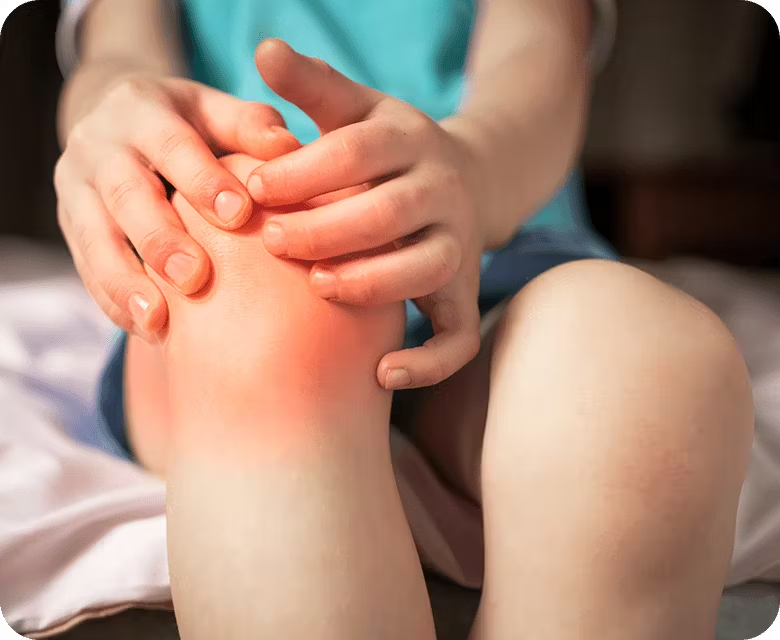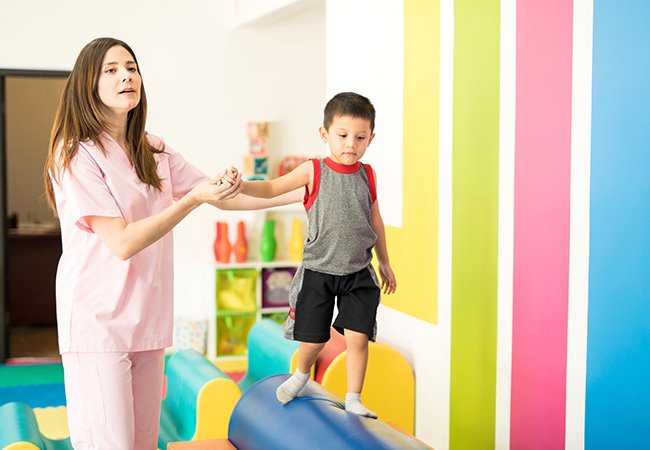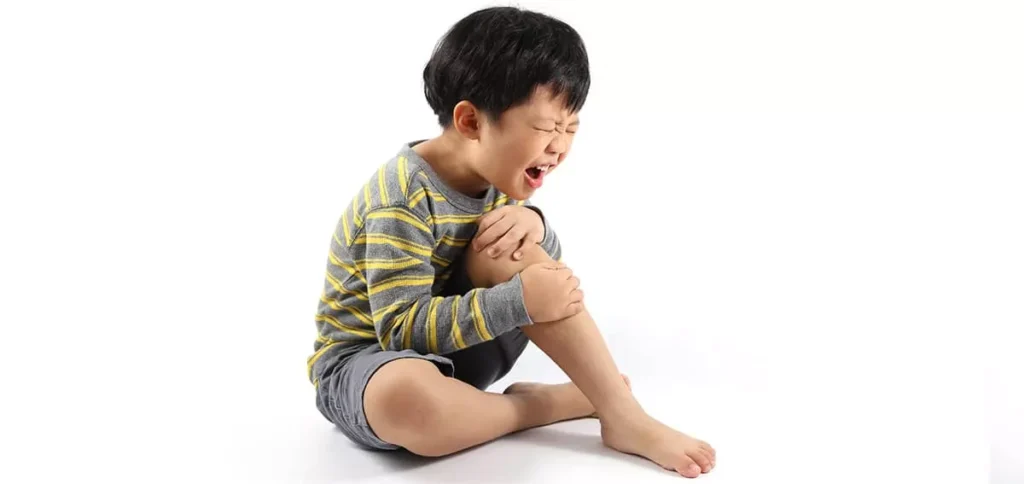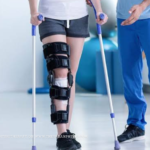Kids bounce back from everything, right? Not always — and ignoring the signs has consequences.
Your eight-year-old clutches their knee after soccer practice. Your pre-teen complains their back hurts after sitting at their desk. Your toddler suddenly starts limping without any obvious injury. “Growing pains,” you reassure yourself. “They’ll outgrow it.”
But here’s the uncomfortable truth that most parents discover too late: What seems minor now could set them up for chronic pain, poor posture, and injuries throughout their teens and beyond.
The Growing Pains Myth We Need to Retire
For generations, “growing pains” has been the default explanation for any childhood discomfort that doesn’t involve a visible injury. It’s become a convenient catch-all that dismisses legitimate concerns and delays proper evaluation.
Here’s what medical research actually tells us: True growing pains are relatively uncommon, typically occur in both legs simultaneously, happen at night or rest (not during activity), and resolve on their own without affecting function. If your child’s pain doesn’t fit this pattern, something else is going on.
The real culprits behind most childhood pain are far more preventable and treatable than we’ve been led to believe.
The Hidden Epidemic: Movement Dysfunction in Modern Children
Today’s children move differently than any previous generation. The combination of increased screen time, decreased outdoor play, early sports specialization, and academic pressure has created a perfect storm for movement problems.
The Sitting Epidemic
Children now spend an average of 7-10 hours per day sitting—at school, during homework, gaming, or watching screens. This prolonged sitting creates:
- Tight hip flexors that pull the pelvis forward, straining the lower back
- Weak glute muscles that fail to stabilize the hips during movement
- Rounded shoulders and forward head posture that stress the neck and upper back
- Core weakness that leaves the spine unsupported
A 10-year-old who sits for most of their day has already accumulated thousands of hours in poor positions, training their body into dysfunctional patterns.
The Sports Specialization Problem
Thirty years ago, kids played different sports throughout the year. Today, many specialize in a single sport as early as age 6, practicing year-round with intensity that would make adult athletes wince.
This creates predictable injury patterns:
- Young baseball pitchers developing shoulder and elbow problems
- Soccer players with chronic knee and ankle issues
- Gymnasts experiencing back pain from repetitive hyperextension
- Swimmers with shoulder impingement
The developing body isn’t designed for repetitive, sport-specific movements without adequate rest and cross-training. Overuse injuries that used to be rare in children are now commonplace.
The Movement Literacy Gap
Previous generations of children developed fundamental movement skills naturally through unstructured play. Today’s children often miss this crucial development, going straight from limited movement to organized sports without ever learning proper mechanics.
The result? Kids who can execute complex sport-specific skills but can’t perform basic movement patterns like squatting, lunging, or landing correctly. This disconnect creates compensations that lead directly to pain and injury.
Warning Signs That Aren’t Just Growing Pains
As a parent, how do you distinguish between normal childhood complaints and genuine movement problems? Watch for these red flags:
Pain Patterns That Demand Attention

- One-sided pain rather than bilateral discomfort
- Pain during or immediately after activity instead of at night during rest
- Pain that limits participation in sports or daily activities
- Pain that persists beyond a few days or keeps returning
- Pain accompanied by limping, swelling, or reduced range of motion
Movement Red Flags
Even without pain, certain movement patterns signal problems brewing:
- Knee collapse inward when running, jumping, or landing
- Excessive arching in the lower back during overhead movements
- Walking on toes past age 2 or sudden toe-walking in older children
- W-sitting position (sitting with knees together, feet apart) as a preferred posture
- Asymmetrical movements like favoring one leg when jumping or kicking
- Poor balance or frequent tripping in an otherwise coordinated child
Postural Warning Signs

- Slouched sitting that seems impossible to correct even temporarily
- Head jutting forward significantly ahead of the shoulders
- Uneven shoulders or hips visible when standing
- Excessive curve in the upper back (thoracic kyphosis)
- One shoulder blade winging out more than the other
The Compensation Cascade
Here’s what makes childhood movement problems particularly insidious: The body is incredibly good at compensating. When one area isn’t functioning properly, other areas work overtime to pick up the slack.
Your child might seem fine for months or years, but these compensations create a cascade of problems:
- Weak core muscles force the lower back to work harder
- Overworked lower back muscles become tight and painful
- Tight lower back restricts hip mobility
- Limited hip mobility increases knee stress
- Excessive knee stress leads to pain and potential injury
By the time pain appears, the problem has been developing for far longer than you realize.
What Pediatric Physiotherapy Actually Does
Pediatric physiotherapy isn’t about treating children like small adults. It requires specialized training in child development, growth-related issues, and age-appropriate interventions.
Comprehensive Movement Assessment
A pediatric physiotherapist evaluates far more than just the painful area. They assess:

- Fundamental movement patterns: Can your child squat, lunge, twist, push, and pull correctly?
- Joint mobility and stability: Are there areas of excessive tightness or hypermobility?
- Muscle strength and balance: Are opposing muscle groups working together properly?
- Postural alignment: How does your child’s body position itself in various activities?
- Sport-specific mechanics: If applicable, how do they perform movements unique to their sport?
- Developmental milestones: Are they meeting age-appropriate physical benchmarks?
Corrective Exercise Programs
Treatment focuses on retraining movement patterns through exercises that feel like play. Children might:
- Practice proper landing mechanics through jumping games
- Build core strength using stability balls and animal walks
- Improve coordination with balance challenges and obstacle courses
- Develop body awareness through movement-based activities
The goal isn’t just to eliminate pain—it’s to establish correct movement patterns that become automatic.
Sports-Specific Training
For young athletes, physiotherapists analyze sport-specific demands and create programs that:

- Address common injury patterns in their sport
- Build resilience through targeted strengthening
- Improve performance through efficient movement
- Prevent overuse injuries through proper load management
Education for Parents and Coaches
Effective pediatric physiotherapy extends beyond the clinic. Physiotherapists educate:
- Parents on proper training loads, recovery needs, and warning signs
- Coaches on age-appropriate training methods and injury prevention
- Children on body awareness and self-management strategies
Ergonomic and Lifestyle Modifications
Treatment often includes practical changes:
- Optimizing desk and chair setup for homework
- Recommendations for appropriate backpack weight and wearing
- Screen time positioning to reduce neck strain
- Sleep positions that support proper alignment
Real Stories: The Cost of Waiting vs. Early Intervention
Case Study: The Young Soccer Player
Emma, age 11, complained of knee pain for three months. Her parents assumed it was growing pains and kept encouraging her to “push through.” By the time they sought help, she had developed compensatory patterns that affected her entire lower body chain.
Evaluation revealed weak hip stabilizers causing her knee to collapse inward during running and cutting movements. This created excessive stress on her knee joint and patellar tendon.
Six weeks of targeted physiotherapy corrected her movement patterns, eliminated her pain, and actually improved her soccer performance. But those three months of compensation had created secondary tightness in her IT band and lower back that required additional treatment.
The lesson? Earlier intervention would have meant faster resolution and less complex rehabilitation.
Case Study: The Gamer’s Posture
Twelve-year-old Jake spent 4-5 hours daily gaming. His parents noticed his increasingly slouched posture but dismissed it as typical teenage laziness. When he started complaining of headaches and upper back pain, they finally sought help.
Assessment revealed:
- 15-degree forward head position
- Rounded shoulders with tight chest muscles
- Extremely weak upper back and neck stabilizers
- Early signs of cervical spine dysfunction
Intervention included postural retraining, strengthening exercises, and significant ergonomic modifications to his gaming setup. After eight weeks, his pain resolved and his posture dramatically improved—but the physiotherapist warned that years of poor positioning had created patterns that would require ongoing awareness to maintain correction.
Starting this intervention in his gaming’s early days would have prevented the pain entirely and avoided the need for intensive correction.
The Developmental Window: Why Childhood Intervention Matters Most
Children’s bodies are remarkably adaptable—which works both for and against them. Poor movement patterns learned in childhood become ingrained, creating default patterns that persist into adulthood. The compensation strategies they develop to avoid pain become their “normal.”
Consider these critical points:
Neural Plasticity Advantage
Children’s brains and nervous systems are far more adaptable than adults’. Correcting movement patterns in childhood creates lasting change more easily than attempting the same corrections in adults who have reinforced dysfunctional patterns for decades.
Growth Plate Considerations
Children’s bones grow from specialized areas called growth plates. Improper loading from poor movement patterns can affect how these bones develop, potentially leading to structural issues that become permanent once growth plates close in late adolescence.
Athletic Foundation
Movement patterns established in childhood form the foundation for all future athletic pursuits. Poor patterns limit performance potential and increase injury risk throughout their sports career and active adult life.
Pain Psychology
Children who experience chronic pain during formative years often develop fear-avoidance behaviors and negative associations with physical activity. This can lead to sedentary lifestyles and decreased quality of life extending into adulthood.
Prevention: Building Movement Resilience from the Start
While this article focuses on addressing existing problems, the ideal scenario is prevention. Here’s how to build movement resilience in your children:
Encourage Diverse Movement
- Support participation in multiple sports across different seasons
- Prioritize unstructured outdoor play
- Include activities that challenge different movement patterns
- Avoid early specialization before age 12-14
Teach Body Awareness
- Help children identify and communicate about their bodies
- Encourage them to distinguish between “good sore” and “bad pain”
- Make body positioning during homework and screen time a discussion point
- Model good movement and posture yourself
Prioritize Recovery
- Ensure adequate sleep for age (9-12 hours for school-age children)
- Build rest days into training schedules
- Watch for signs of overtraining: fatigue, mood changes, decreased performance
- Don’t push through pain—investigate it
Create Movement-Friendly Environments
- Set up ergonomic homework and gaming spaces
- Provide proper sports equipment including well-fitted shoes
- Encourage movement breaks during long sitting periods
- Make physical activity a family priority
Taking Action: When and How to Seek Help
Don’t wait for pain to become severe or limitations to become obvious. Consider pediatric physiotherapy consultation if:
- Pain persists beyond 5-7 days
- Your child modifies activities to avoid pain
- You notice consistent movement asymmetries
- Posture concerns persist despite reminders
- Your child participates in high-level sports
- Recovery from minor injuries takes longer than expected
What to Expect at the First Visit
The initial assessment typically includes:
- Detailed history of symptoms, activities, and development
- Comprehensive movement screening
- Specific tests for identified problem areas
- Discussion of goals and concerns
- Development of a treatment plan with realistic timelines
Most pediatric physiotherapy involves 1-2 sessions per week initially, transitioning to home-based programs as movement patterns improve.
Questions to Ask
When seeking a pediatric physiotherapist:
- What experience do you have with pediatric patients?
- How do you make treatment engaging for children?
- What’s your approach to parent education and home programs?
- How do you communicate with coaches or teachers when relevant?
- What are realistic expectations for my child’s specific situation?
The Long Game: Investment in Lifelong Movement Health
Pediatric physiotherapy isn’t just about fixing current problems—it’s an investment in your child’s long-term physical health and quality of life.
Children who learn proper movement patterns early:
- Experience fewer injuries throughout their athletic careers
- Maintain better posture and experience less chronic pain as adults
- Develop positive relationships with physical activity
- Build confidence in their physical abilities
- Create sustainable movement habits that support lifelong health
The cost of a few physiotherapy sessions pales in comparison to the potential costs of:
- Years of chronic pain management
- Surgical interventions for preventable injuries
- Missed opportunities in sports and activities
- Reduced quality of life from physical limitations
- Expensive treatments for problems that become complex over time
Your Child’s Movement Story Starts Now
That complaint of pain after sports practice might seem minor today. That slouched posture during homework might look like typical kid behavior. That subtle limp might appear to resolve on its own.
But childhood is when movement patterns are established. It’s when compensations take root. It’s when small problems either get corrected or become lifelong patterns.
Kids are resilient, but they’re not invincible. Their growing bodies are adapting every day to the demands we place on them—and to the dysfunctions we allow to persist.
The question isn’t whether your child will experience some pain or movement challenges. In today’s environment, most children do. The question is whether you’ll recognize the signs early enough to course-correct before compensation patterns become permanent.
Your child’s future mobility, athletic potential, and physical comfort decades from now are being shaped by the movement patterns they’re developing today.
Don’t let “growing pains” be the end of the conversation. Let it be the beginning of a proactive approach to your child’s movement health.
Because kids do bounce back—but they bounce back faster, more completely, and with better long-term outcomes when we give them the tools and support they need.





